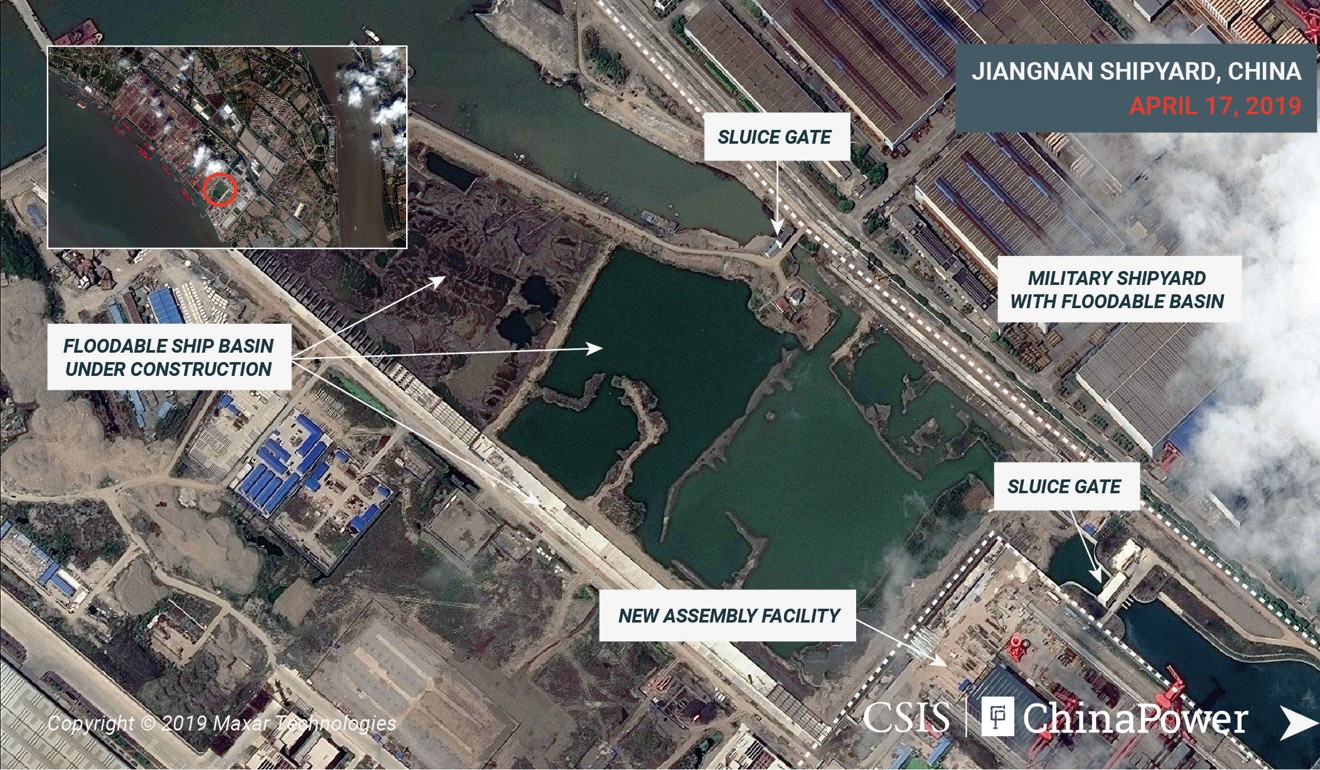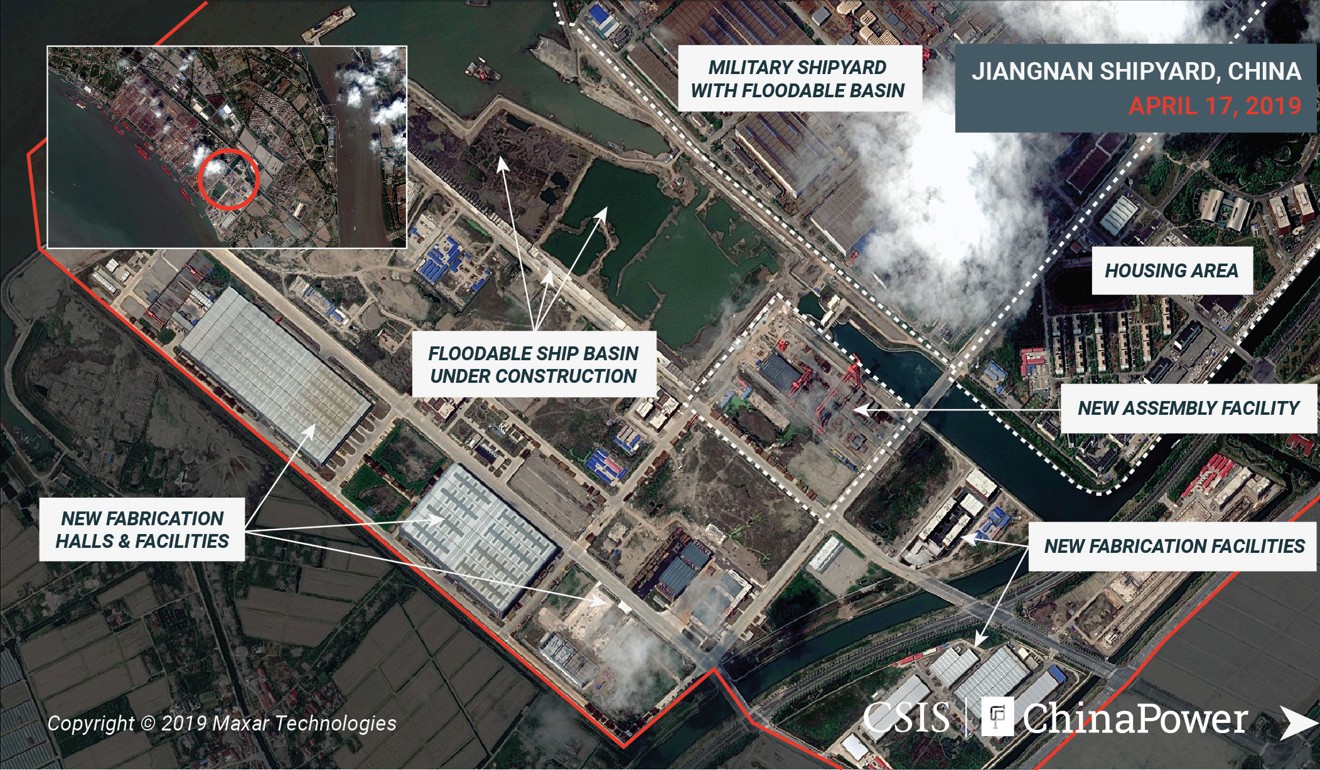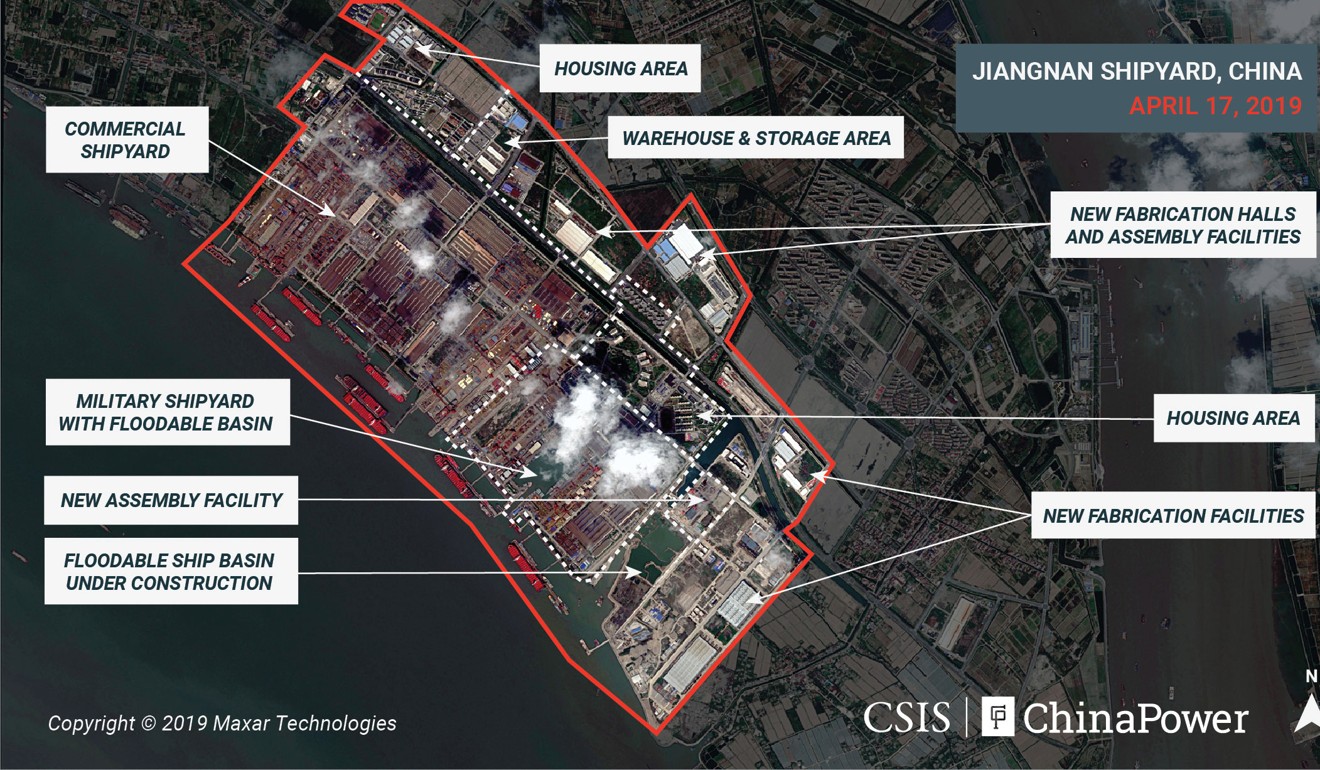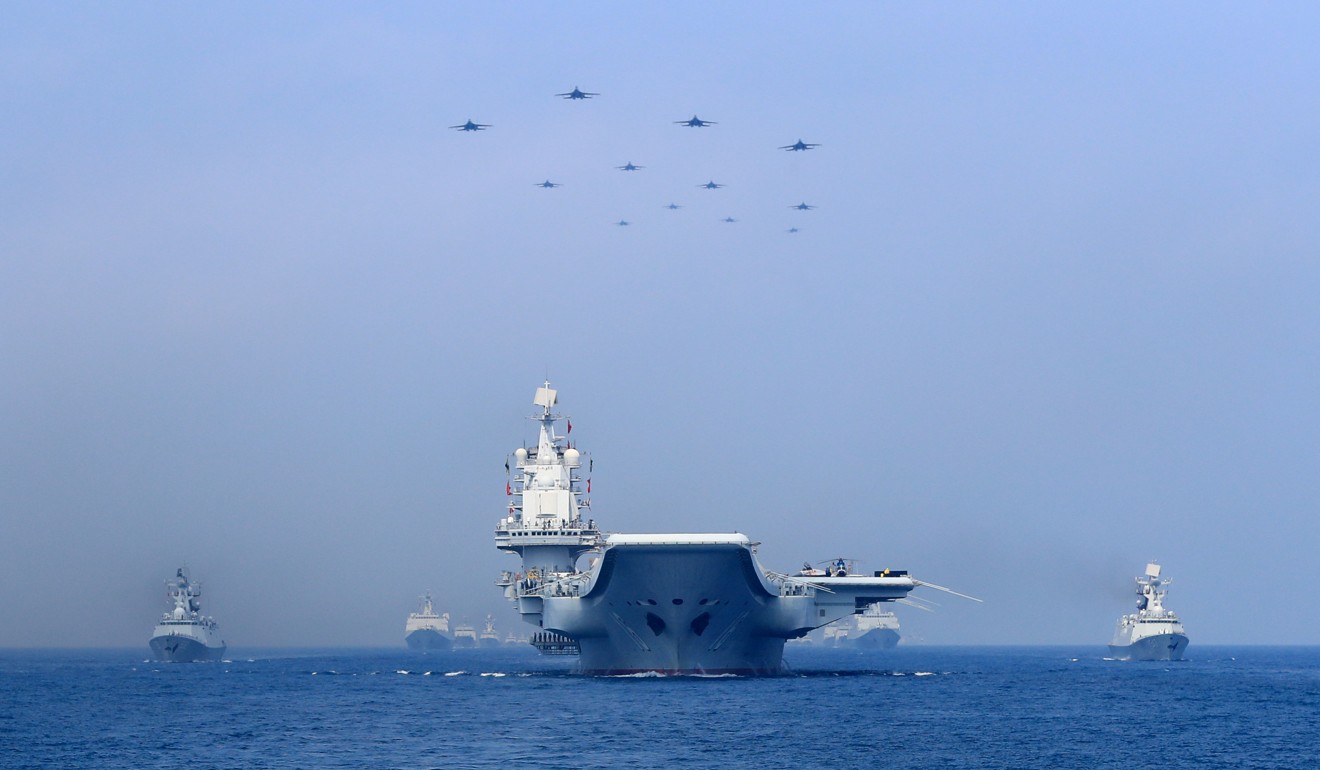
Satellite images show how work on China’s new Type 002 aircraft carrier is coming along
- Photos released by US think tank give clues as to how country’s first domestically designed carrier will take shape
- Chinese navy is looking to expand its strength and presence but currently has only one active carrier, which originated in the former Soviet Union
Newly released satellite images show how work on China’s first domestically designed aircraft carrier has been progressing and provide some clues as to how the vessel will take shape.
The images, dated to April 17 and released by the US think tank the Centre for Strategic and International Studies on Tuesday, lift the lid on the construction work at the Jiangnan Shipyard outside Shanghai.
The carrier, known as the Type 002, will be China’s third.
The centre’s ChinaPower analysis said: “While details regarding the Type 002 are limited, what is observable at Jiangnan is consistent with what is expected for the People’s Liberation Army Navy’s third aircraft carrier.”

China is trying to build up a navy that can operate globally and support its maritime security, but so far it only has one aircraft carrier – the Liaoning, a second-hand vessel from the former Soviet Union.
The PLA is expected to take delivery of China’s first home-grown carrier, the Type 001A, later this year, but its design is still based on an old Soviet model.
While China has not officially announced the building of the third carrier, state media reported the project’s existence in November last year.
State news agency Xinhua said that “a new type of carrier has been under construction”.
The images released by the US think tank show that the new carrier has a bow section that appears to end with a flat 30-metre (98-foot) front, while there is a separate 41-metre hull section.
Fabrication halls the size of several soccer pitches have been built nearby, and work appears to be continuing on a floodable basin, possibly to allow the finished hull to float into the nearby Yangtze estuary.
The size of the vessel suggests that it will be larger than the 55,000-tonne Liaoning, which has a waterline width of 35 metres.
“This vessel may have a displacement of around 80,000 tonnes,” said Song Zhongping, a Hong Kong-based military commentator.

If so, it would be smaller than America’s 100,000-tonne Nimitz-class and Gerald R Ford-class carriers, but bigger than any other carriers in the world – including Britain’s 65,000-tonne Queen Elizabeth-class, France’s 42,500-tonne Charles de Gaulle, India’s Vikramaditya and Vikrant and Russia’s Admiral Kuznetsov, a sister ship of the two Chinese carriers.
China’s two current Kuznetsov-based carriers are both conventionally powered with old-fashioned ski-jump take-off decks.
Song said the Type 002 was not expected to be nuclear-powered because no Chinese surface warships had used the technology, which has so far only been seen on submarines.
The Pentagon’s annual report on China’s military modernisation, published last Friday, predicted that the third Chinese carrier would probably be the biggest yet, and that it was likely to be fitted with a catapult launch system to support additional fixed-wing aircraft such as fighters and early-warning aircraft.
Sources said the Type 002 would have electromagnetic catapults, which are currently only used on America’s most advanced carriers, the Ford class.
These allow more aircraft to be launched in a shorter time compared with other catapult systems and help to reduce wear and tear on the aircraft.

The Type 002 will be the first Chinese carrier to be entirely designed and built at home.
The Liaoning entered service in 2012 after it was retrofitted from an unfinished Soviet carrier that China bought from Ukraine in 1998.
Work began on the Type 001A, which was based on a modified version of the old Soviet carriers, the next year. The vessel was launched in 2017 and is now undergoing sea trials.

The Chinese navy, which celebrated its 70th anniversary last month with a sea parade off the coast of Qingdao, is looking to bolster its presence in the region and beyond.
Military spending has been increasing rapidly for more than two decades as the country’s armed forces have sought to catch up with other nations. Last year alone China launched more than 30 warships.
The country’s official media has reported that experts believe the PLA Navy will need as many as six carriers – a build-up of strength that will take years to complete.
However, the United States remains the world’s strongest naval force and has 11 carriers, with two more under construction.

